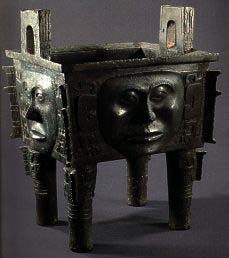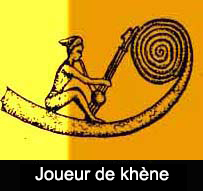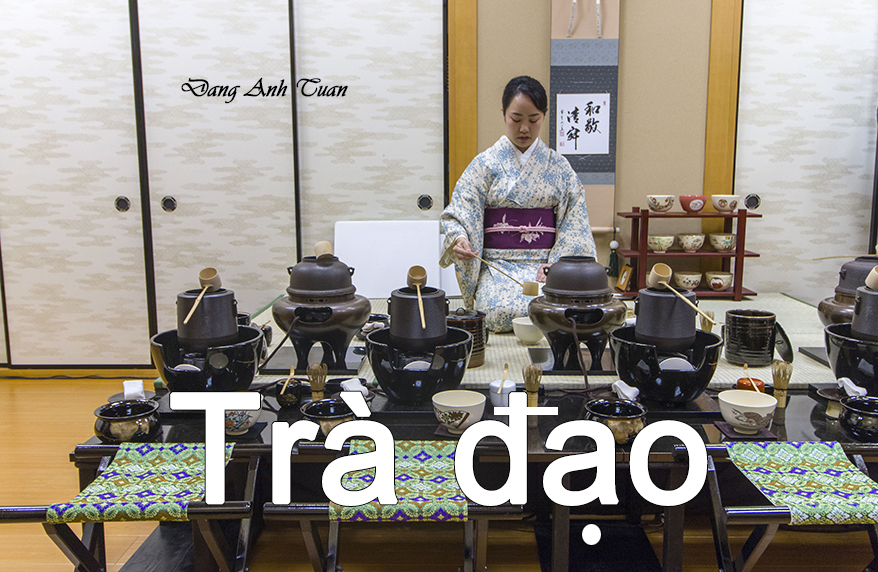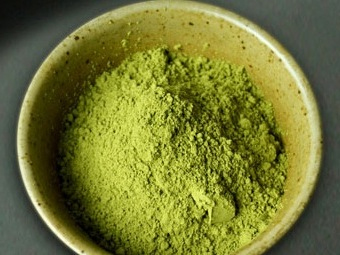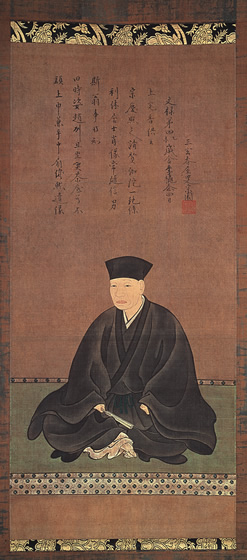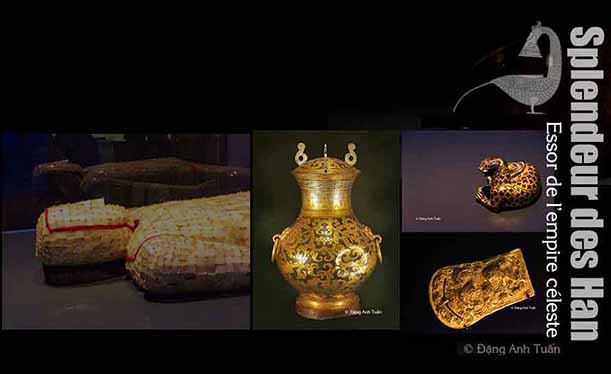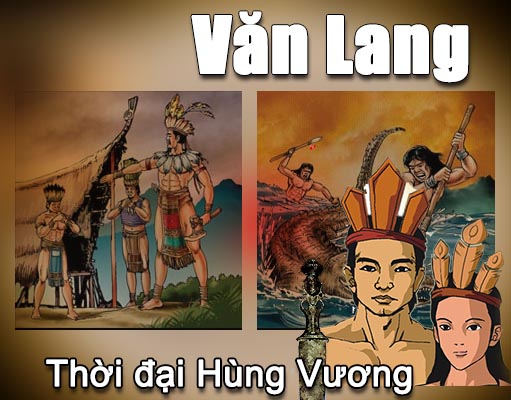
Version française
Version vietnamienne
Galerie des photos
Also noted is the significant event highlighted by the Chinese historian Trịnh Tiều in his work Thông Chí: In southern China, during the reign of King Nghiêu (2253 BC), there was an emissary from a tribe named Việt Thường who offered the king, as a token of allegiance, an old turtle that lived for over 1000 years and measured 3 meters in length. On its back were inscriptions bearing characters shaped like tadpoles (văn Khoa Ðẩu), which allowed the interpretation of all the changes of Heaven and nature. King Nghiêu decided to name them Qui Lịch (or turtle calendar). This form of writing was recently found on a stone that is part of the cultural relics of the Sapa-Lào Cai region in northern Vietnam.
The Vietnamese historian Trần Trọng Kim raised this issue in his work titled Viet Nam sử lược (A Brief History of Vietnam).
Many clues have been found in favor of the interpretation of a single tribe, a single people. It cannot be denied that there is an undeniable link between the tadpole-shaped writing and the toad found either on the bronze drums of Ðồng Sơn or on the popular Vietnamese prints of Ðông Hồ, the most famous of which remains the print « Thầy Ðồ Cóc » (or The Toad Master). On the latter, the following phrase is found: Lão oa độc giảng (The old toad holds the monopoly on teaching). Although it appeared only 400 years ago, it cleverly reflected the perpetual thought of the era of the Hùng kings (Hùng Vương). It is not by chance that the toad is attributed the role of master, but rather to highlight the importance of the representation and meaning of this image. The toad was the bearer of a civilization whose tadpole-shaped writing was used by the Lạc Việt tribe during the time of the Hùng Vương because it was the father of the tadpole. Similarly, through the print « Chú bé ôm con cóc » (or the boy hugging the toad), the original thought of the Lạc Việt people was revealed. The child’s respect for the toad, or rather its master (Tôn Sư trọng đạo), was a concept already existing during the time of the Hùng Vương. Could one conclude that there was a correlation with what was later found in the Confucian spirit with the phrase Tiên học lễ, hậu học văn (First learn manners, then learn knowledge)?
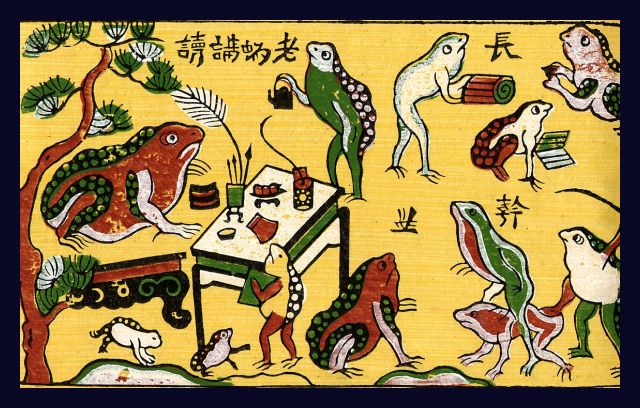
In Vietnam, the turtle is not only a symbol of longevity but also of the transmission of spiritual values in Vietnamese tradition. Its representation can be found everywhere, especially in common places such as communal houses, pagodas, and temples. It is used in the Temple of Literature (Văn Miếu) to support steles praising the merits of national exam laureates.
The crane on the back of the turtle
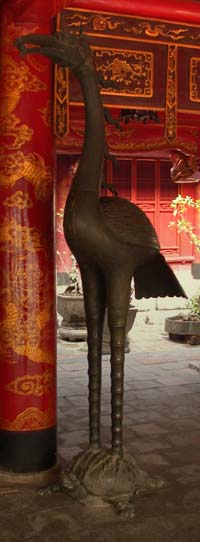
On the other hand, in temples and communal houses, it is always seen carrying a crane on its back. There is an undeniable resemblance between this crane and the long-beaked wading bird found on the bronze drums of Ðồng Sơn. The image of the crane on the turtle’s back probably reflects the continuity of all religious beliefs derived from the Văn Lang civilization over time. The omnipresence of the turtle in the history and culture of the Vietnamese is neither the result of long Chinese domination nor chance, but it must be due to the fact that the kingdom of Văn Lang was located in a region populated by large turtles. It is only in the southern basin of the Yangtze River (Sông Dương Tữ) that this species of large turtles, now endangered, can be found. This was reported by the Vietnamese author Nguyễn Hiến Lê in his work entitled « Sử Trung Quốc » (History of China) (Văn Hoá Publisher, 1996).
It is unlikely that one day archaeological remains proving the existence of this kingdom will be found, like those already discovered from the Shang dynasty. But nothing invalidates this historical truth because, besides the facts mentioned above, there is even intangible proof of a very ancient civilization in this kingdom, often called « the Văn Lang civilization, » whose foundation was found in the theory of Yin and Yang and the five elements (Thuyết Âm Dương Ngũ Hành). This was demonstrated through the sticky rice cake « Bánh Chưng Bánh dầy, » which was exclusively unique to the Vietnamese people since the period of the Hùng Vương kings. One might question the origin of this theory, which has so far been attributed to the Chinese. It was known that according to the Historical Records of Sima Qian (Sử Ký Tư Mã Thiên), Trâu Diễn (Tseou Yen, a philosopher from the state of Qi (Tề Quốc) (350-270 BC)) during the Warring States period (thời Chiến Quốc), was the first Chinese to highlight the relationship between the theory of Yin and Yang and that of the five elements (wu xing).
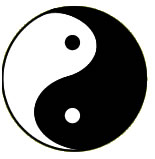
Âm Dương
The first was mentioned in the book Zhouyi (Chu Dịch) by the son of King Wen (1), Chu Công Ðán (the Duke of Zhou), while the second was found by Yu the Great (Ðại Vũ) of the Xia dynasty (Hạ). There is practically a gap of 1000 years between these two theories. The concept of the five elements was quickly integrated into the theory of yin and yang to provide an explanation of the tao, which is the origin of all things. Despite the success encountered in a large number of fields of application (astrology, geomancy, traditional medicine), it is difficult to give a coherent justification regarding the date of publication of these theories because the notion of Taiji (thái cực) (the supreme limit), from which the two main elements were born (yin and yang), was introduced only at the time of Confucius (500 years B.C.). Taiji has been the subject of meditation by philosophers from all backgrounds since the philosopher of the Song era and the founder of neo-Confucianism, Zhou Dunyi (Chu Ðôn Di), gave this concept a new definition in his bestseller: « Treatise on the Taiji Diagram » (Thái Cực đồ thuyết):
Vô cực mà là thái cực, Thái cực động sinh Dương, động đến cực điểm thì tĩnh, tĩnh sinh Âm, tĩnh đến cực đỉnh thì lại động. Một động một tĩnh làm căn bản cho nhau….
From Wuji (Limitless) to Taiji (Supreme Limit). The supreme limit, once in motion, generates yang, and at the limit of movement is rest; this, in turn, generates yin, and at the limit of rest is the return to movement. Movement and rest, each takes root in the other.
For the Chinese, there is a sequence in the beginning of the universe:
Thái cực sinh lưỡng nghi là Âm Dương, Âm Dương sinh Bát Quái
From Taiji come Heaven and Earth, a Yin and a Yang that give birth to the eight trigrams.
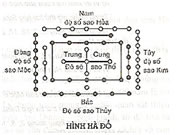 Hà Đồ (River Diagram)
Hà Đồ (River Diagram)
The inconsistency is so visible in the chronological order of these theories because Fu Xi (1) was attributed with the invention of the eight trigrams around 3500 BC, whereas the notion of Yin and Yang was introduced during the Zhou era (1200 BC). Relying on recent archaeological discoveries, particularly the discovery of the silk manuscripts at Mawangdui (1973), today’s Chinese specialists propose unimaginable statements: The hexagrams precede the trigrams, etc., which proves that the chronological order of these theories is subject to constant revision according to new situations. This leads us to find, in this confusion, another explanation, another approach, another hypothesis according to which the theory of Yin-Yang and the five elements was appropriated by another civilization. That would be that of Văn Lang. Confusion continues to be ingrained in the reader’s mind with the famous River Plan and the Luo Script (Hà Ðồ Lạc Thư).
The Luo Script was supposed to be found before the appearance of the River Plan. This highlights the contradiction found in the chronological order of these discoveries. Some Chinese had the opportunity to question the traditional history established until then in Confucian orthodoxy by the Chinese dynasties. This is the case of Ouyang Xiu (1007-1072), who saw in this famous plan the work of man. He refuted the « Mandate of Heaven » in his work entitled « Questions of a Child on the Yi King (Yi tongzi wen) » (Zhongguo shudian, Beijing 1986). He preferred the version of human invention.
Can the truthfulness of the Chinese legend be granted when it is known that there was also a complete inconsistency in the chronological order of the discovery of these famous River Plan and Luo Script?
Fou Xi (Phục Hi) (3500 BC) first discovered the River Plan (Hà Ðồ) during an excursion on the Yellow River. He saw a dragon horse (long mã) emerge from the water carrying this plan on its back. It was attributed to You the Great (Đại Vũ) (2205 BC) the discovery of the Luo Script found on the back of the turtle. Yet it is thanks to the Luo Script and its explanation (Lạc Thư cửu tinh đồ) that one manages to establish and correctly interpret the stellar diagram based on the North Star (Bắc Ðẩu) and found on this famous River Plan according to the principle of Yin and Yang and the 5 elements.
The famous word « Luo » (Lạc) found in the text of the Great Commentary of Confucius:
Thị cố thiên sinh thần vật, thánh nhân tắc chi, thiên địa hóa thánh nhân hiệu chi; thiên tượng, hiện cát hung, thánh nhân tượng chi. Hà xuất đồ, Lạc xuất thư, thánh nhân tắc chi.
Cho nên trời sinh ra thần vật, thánh nhân áp dụng theo; trời đất biến hoá, thánh nhân bắt chước; trời bày ra hình tượng. Hiện ra sự tốt xấu, thánh nhân phỏng theo ý tượng. Bức đồ hiện ra sông Hoàng Hà, hình chữ hiện ở sông Lạc, thánh nhân áp dụng .
Therefore, Heaven gives birth to divine things, the Sages apply them; Heaven and Earth transform and change, the Sages imitate them; Heaven displays images. Manifesting good and bad, the Sages follow the symbolic meaning. The map shows the Yellow River, the character appears on the Luo River, the Sages apply them.
Heaven gives birth to divine things, the Sages take them as criteria. Heaven and Earth undergo changes and transformations, the Sages reproduce them. In Heaven hang images manifesting fortune and misfortune, the Sages imitate them. From the Yellow River comes the Map, from the Luo River comes the Script, the Sages take them as models.
continues to be interpreted up to today as the name of the Luo River, a tributary of the Yellow River that crosses and nourishes central China. These famous River Plan and Luo Script are still seen as the beginnings of Chinese civilization. From drawings and figures to trigrammatic signs, from trigrammatic signs to linguistic signs, one thinks of the progress of Chinese civilization in the Yi King without believing that it could have been the model borrowed by the Sage from another civilization. Yet if Luo is associated with the word Yue, it refers to the Lạc Việt tribe (Luo Yue) from which the Vietnamese descend. Is this a pure coincidence or the name used by the Sages Yu the Great or Confucius to refer to the Văn Lang civilization? Lạc Thư indeed designates the writing of the Luo tribe, Lạc tướng its generals, Lạc điền its territory, Lạc hầu its marquises, etc.
It is wonderful to observe that the theory of Yin-Yang and the five elements finds its perfect cohesion and functioning in the glutinous rice cake, an intangible proof of the Văn Lang civilization. Apart from the water needed to cook the cake, its composition includes the four essential elements (meat, yellow beans, glutinous rice, bamboo or pandan leaves). The generating cycle (Ngũ hành tương sinh) of the five elements is clearly visible in the making of this cake. Inside the cake, there is a piece of red-colored pork (Fire) surrounded by a kind of dough made from yellow beans (Earth). All of this is wrapped in white glutinous rice (Metal) to be cooked with boiling water (Water) before acquiring a green coloration on its surface thanks to the pandan leaves (Wood).
The two geometric shapes, a square and a circle that this cake takes, correspond well to Yin (Âm) and Yang (Dương). Since the Yang breath reflects fullness and purity, it is attributed the shape of a circle. As for Yin, this breath contains impurity and limitation. That is why it is given the shape of a square. A slight difference is notable in the definition of Yin-Yang between the Chinese and the Vietnamese. For the latter, Yin tends to be in motion (động).
Generating cycle
Fire->Earth->Metal->Water->Wood->Fire
Mutual generation of the five elements
That is why only the presence of the 5 elements is found in Yin, represented by the square-shaped rice cake (Bánh chưng). This is not the case for the round-shaped cake symbolizing Yang, which tends to carry the character of « stillness » (tĩnh). This is probably the reason why, up to today, the law of Yin-Yang and the five elements has not made significant progress in its development and why its applications continue to carry a mystical and confusing character in public opinion due to the error introduced in the definition of Yin-Yang by the Chinese.
Temples of the Hùng Kings
It is customary to say « Mẹ tròn, con vuôn » in Vietnamese to wish the mother and her child good health at the time of birth. This expression is used as a polite phrase if one does not know that it was handed down by our ancestors to draw our attention to the creative nature of the Universe. From the latter were born Yin and Yang, which are not only in opposition but also in interaction and correlation. The complementarity and inseparability of these two poles are the basis for the satisfactory development of nature. The typically Vietnamese game « Chơi ô ăn quan » also demonstrates the perfect functioning of the Yin-Yang theory and the five elements. The game stops when no tokens are found in the two extreme semicircles corresponding to the two poles Yin and Yang.
Ancestor altar
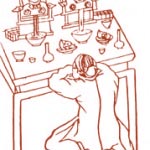
No Vietnamese hides their emotion when they see the sticky rice cake on their ancestors’ altar during the Tết festival. For them, this dish, which may appear unattractive and lacks a delicious taste, has a special meaning. It testifies not only to the respect and affection that Vietnamese people like to maintain towards their ancestors but also to the imprint of a 5,000-year-old civilization.
This sticky rice cake is the undeniable proof of the perfect functioning of Yin and Yang and the five elements. It is the only intact legacy that the Vietnamese have managed to receive from their ancestors amidst the whirlwinds of history. It cannot rival the masterpieces of other civilizations like the Great Wall of China or the pharaohs’ pyramids made with sweat and blood. It is the living symbol of a civilization that has bequeathed humanity knowledge of immeasurable value, which continues to be used in many fields of application (astronomy, geomancy, medicine, astrology, etc.).
[Return CIVILISATION]
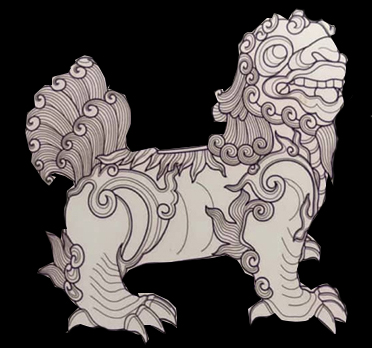
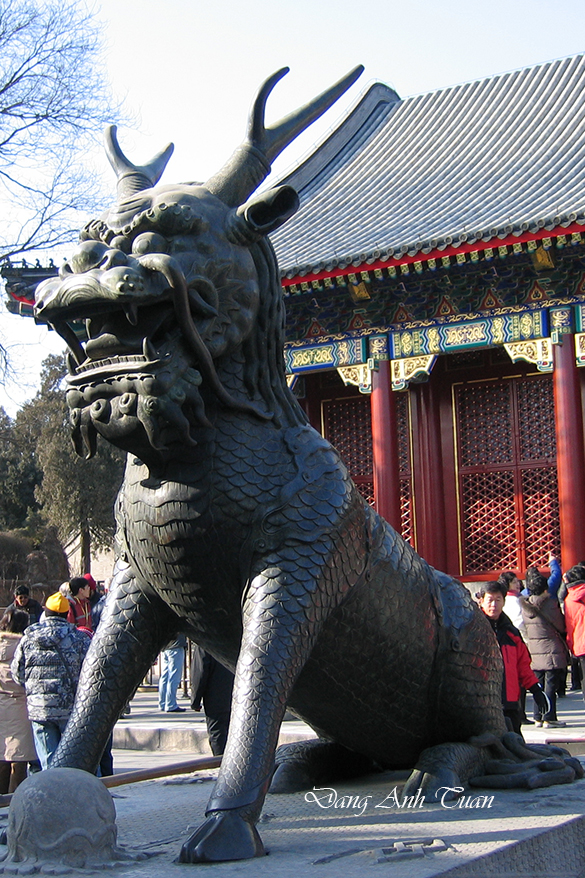

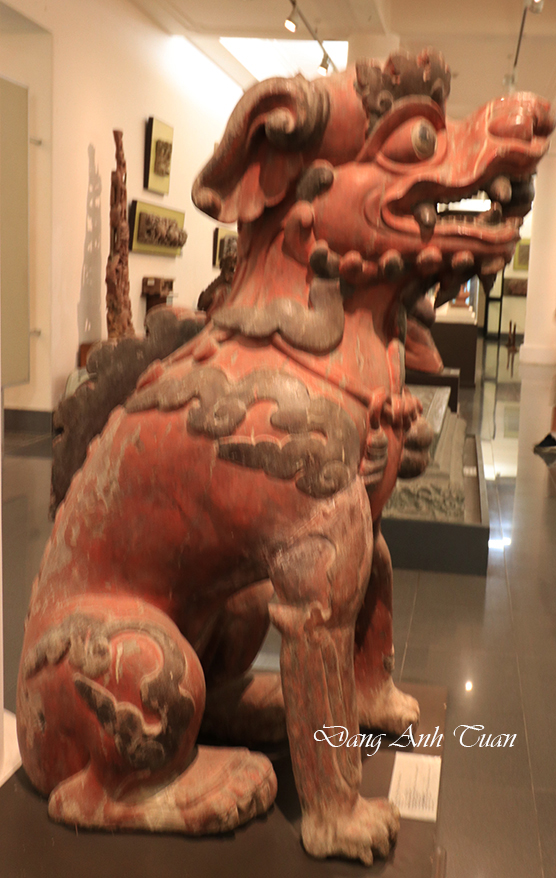
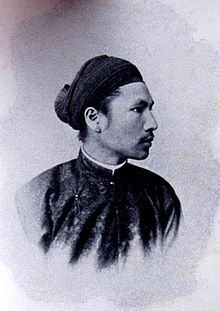
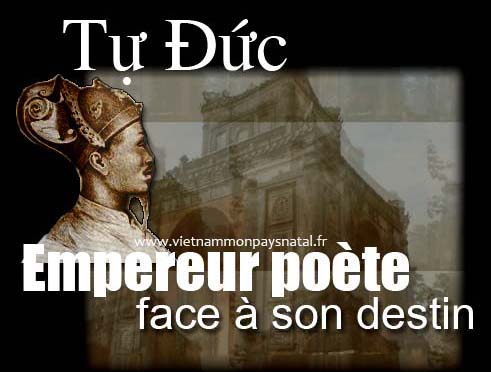
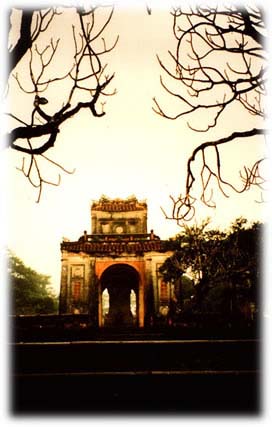






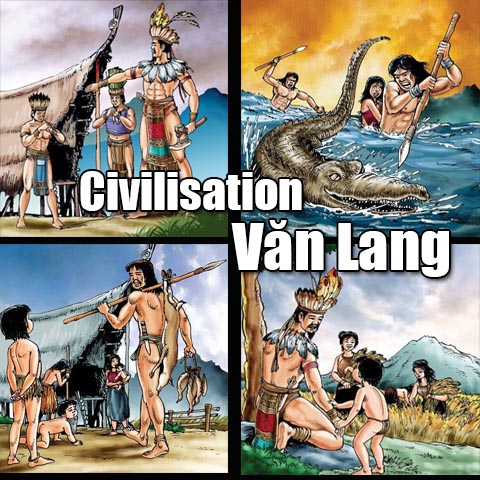
 synonymous with the word Lac (
synonymous with the word Lac ( ), a nickname for the Viet. In short, Kinh Dương Vương
), a nickname for the Viet. In short, Kinh Dương Vương 
